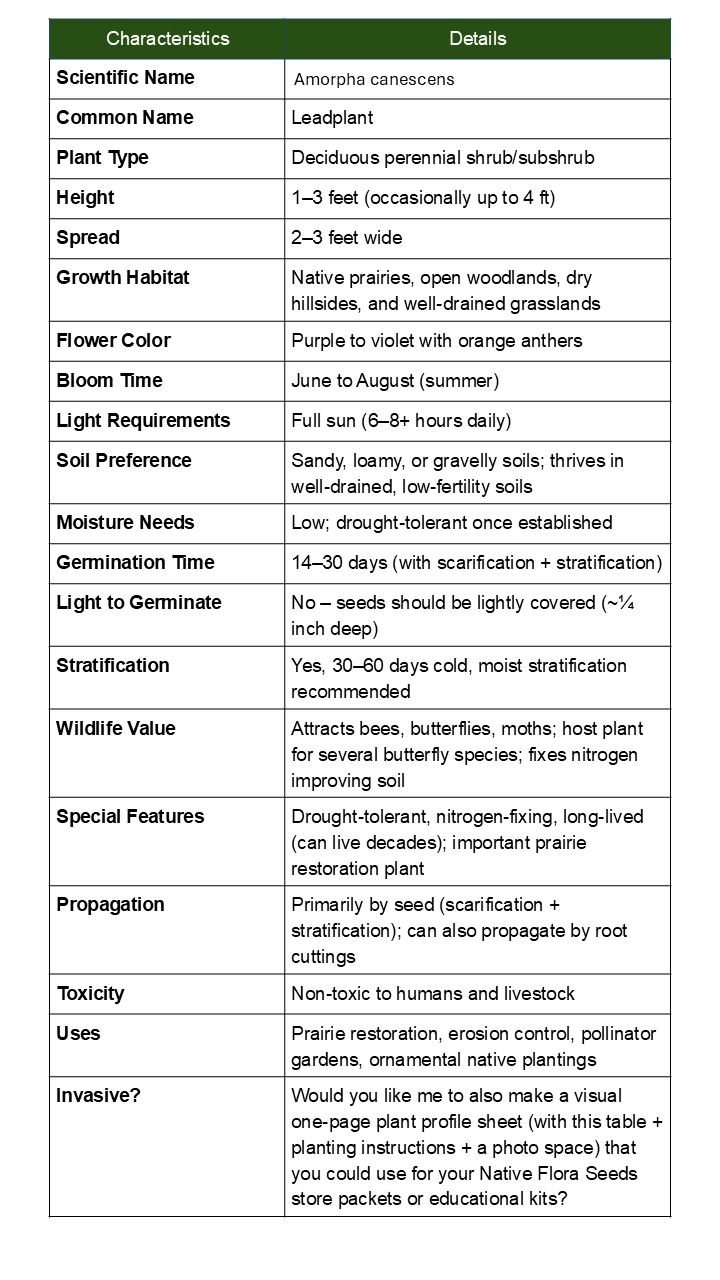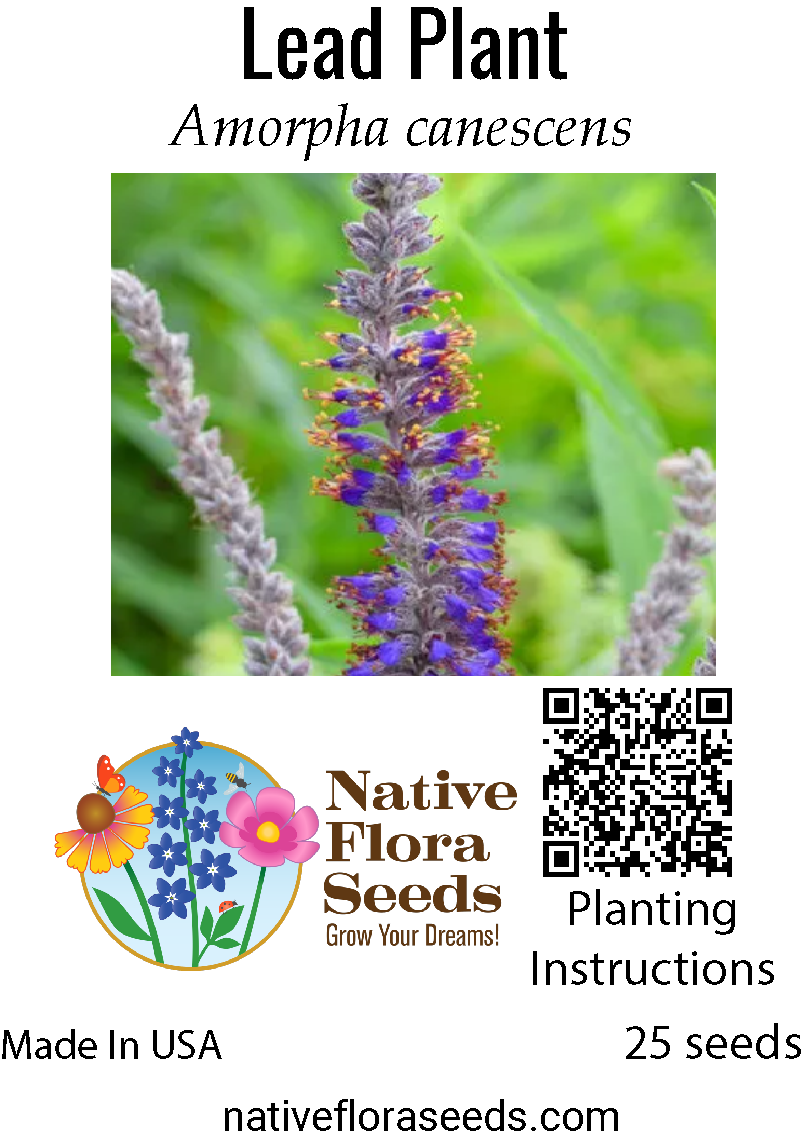Lead Plant Seeds - Premium Amorpha canescens for Prairie Restoration Gardens
Regular price$4.00
/
Tax included.
No reviews
Description
Resilient Prairie Shrub - Lead Plant
Lead Plant (Amorpha canescens) is a remarkable native prairie shrub that embodies the endurance and beauty of America's grasslands. This long-lived perennial features distinctive silvery-gray foliage and stunning spikes of deep purple flowers topped with golden anthers, creating a striking contrast that commands attention in any landscape.
🌿 Key Benefits:
- Nitrogen Fixer: Legume that enriches soil naturally, supporting surrounding plants
- Extreme Drought Tolerance: Thrives in dry, sandy, or rocky soils where other shrubs fail
- Pollinator Paradise: Attracts native bees, butterflies, and beneficial insects
- Fire Resistant: Adapted to prairie fires, regenerates from deep roots
- Wildlife Value: Foliage provides browse for deer and other wildlife
- Long-Lived: Perennial shrub that can live for decades once established
🌱 Plant Characteristics:
- Height: 2-4 feet tall, 2-3 feet wide
- Bloom Time: Mid to late summer
- Flowers: Deep purple spikes with bright golden anthers
- Foliage: Distinctive silvery-gray, finely divided compound leaves
- Light: Full sun (essential for best performance)
- Soil: Well-draining, sandy, rocky, or poor soils preferred
- Zones: 2-8
🎯 Perfect For:
- Prairie restoration and native plant gardens
- Xeriscaping and drought-tolerant landscapes
- Pollinator habitat creation
- Soil stabilization on slopes and challenging sites
- Wildlife habitat and naturalized areas
- Educational and demonstration gardens
Growing Tips: Direct sow in fall or early spring. Seeds benefit from scarification or hot water treatment. Plants develop deep taproots and may take 2-3 years to reach full size but are extremely long-lived.
Each packet contains fresh, viable seeds with detailed growing instructions. Sustainably sourced from native Great Plains populations.


